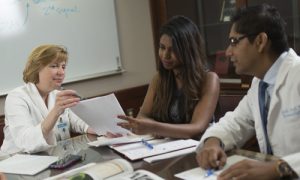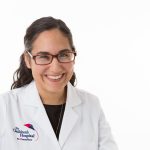Analysis of the 2015 ACR Workforce Study, published in the April 2018 issue of Arthritis Care & Research, revealed the U.S. will face a shortage of 4,000 rheumatology providers by 2030.1
This shortage will be uneven, with rheumatology providers concentrated in urban and suburban areas, and rural areas underserved. The Central U.S., Southwest, Southeast and Northwest will, more broadly, face low provider density.
4 Facets
In the face of these challenges, the ACR has continued to advocate at the state and federal levels to help address the projected workforce shortfall.2 The workforce issue has four facets, says Angus Worthing, MD, FACR, FACP, chair of the ACR’s Government Affairs Committee and partner at Arthritis & Rheumatism Associates in Washington, D.C.:
- A lack of rheumatologists;
- Maldistribution of rheumatologists;
- More demand for adult rheumatology fellowship slots than are currently budgeted for and allotted in the U.S.; and
- Less demand for pediatric fellowship slots than are allotted.
The ACR is approaching these shortfalls in a number of ways, including a push to fund loan forgiveness programs for rheumatologists willing to practice in areas of need and endeavors to fund more training slots.
The Trouble with Training Slots
Earlier efforts, says Beth L. Jonas, MD, FACR, chair of the ACR’s Committee on Rheumatology Training & Workforce Issues (COTW), were successful in recruiting more trainees to adult rheumatology. For years, she says, the ACR and the Rheumatology Research Foundation actively worked to “increase the interest in a career in rheumatology among medical students and residents.” Those efforts were extremely fruitful.
“The interest in becoming a rheumatologist has been really high the last two to three years,” Dr. Jonas says. “But we don’t have enough fellowship training slots.”
Roughly 100 more physicians applied for slots than there were fellowships available in last year’s match.
“Most rheumatology training programs don’t have adequate funding to train rheumatology fellows, and that’s where the Foundation has helped bridge the gap,” says Dr. Jonas, chief of Rheumatology, Allergy and Immunology at the University of North Carolina School of Medicine, Chapel Hill. “It [partially] funds between 20 and 25 fellowship slots a year. The Arthritis Foundation has a new grant mechanism for programs that are able to increase their training slots, too.”
Dr. Worthing never wastes an opportunity to encourage ACR members and colleagues to donate to the Foundation to support such efforts. He is also heartened by some of the innovative ways program directors across the country are expanding their rheumatology training programs.
Some, such as University of Rochester [N.Y.] Medical Center rheumatologist Bethany Marston, MD, shared their successes at the ACR’s Joint Division and Program Directors Forum during the 2018 ACR/ARHP Annual Meeting.
The process for adding a third fellowship slot at Rochester, Dr. Marston explains, involved a one-on-one discussion with the senior associate dean of graduate medical education, written proposals that stated the academic case (strengthening the standing of the division) and the business case (improving or at least not harming institutional revenue), approval by the division chief and department chair, and review and approval of the university’s academic practices committee.
The COTW is poised to help program directors interested in engaging in similar endeavors, says Dr. Jonas.
Pediatric Slots & Loan Forgiveness
Although there are not enough slots to train rheumatologists in adult medicine, pediatric rheumatology slots are remaining empty. Just half of the available fellowships were filled last year, Dr. Jonas explains.
The federal government provides for pediatric loan forgiveness in identified shortage areas, Dr. Worthing says, which could “help solve two problems at the same time by increasing demand for pediatric rheumatology fellowship slots,” and also “incentivizing them to practice in medically underserved areas.”
The ACR advocates for the continuation and appropriation of funds for that program, as well as the public service loan forgiveness program, which should also help address maldistribution by encouraging physicians to practice in shortage areas. However, recent problems with the public service loan forgiveness program have resulted in delayed or denied payments.3 The ACR will continue to work on the issue, Dr. Worthing says.
In addition, Georgia state representative Kim Schofield (D) has introduced a state bill that would provide loan repayment for rheumatologists and other cognitive specialists who practice in underserved areas not already covered by federal programs, as determined by the Georgia Board of Physician Workforce.4
If passed, it would grant providers $25,000 a year for four years to offset loan payments and could serve as a model bill for other states, Dr. Worthing says. It would also serve to help thousands of patients in each region in need.
Other Initiatives
The ACR also supports more training opportunities for international medical graduates—if more slots become available and policies that permit more qualified foreign physicians to practice in the U.S. are put into place.
“One of the other important initiatives is helping prepare advanced practice providers for rheumatology practice,” says Dr. Jonas, noting the ACR’s active involvement in online learning, such as the Advanced Rheumatology Course, eBytes and a new endeavor by the ACR, ARP and the American Academy of Physician Assistants that will bring providers together this summer for a face-to-face meeting for foundational instruction in rheumatology for health professionals.
Some state rheumatology societies have also worked to add advanced practice providers into rheumatology rotations.
“As powerful as the U.S. government is, I think addressing the workforce shortage is going to happen locally, so the initiatives in Georgia, Rochester, [N.Y.], and elsewhere across the country are exciting,” says Dr. Worthing.
Looking Ahead
Despite the challenges ahead, Dr. Jonas is optimistic about the future of rheumatology, which has become a competitive subspecialty in the U.S.
“In addition to a marked increase in the number of applicants for rheumatology training, the quality of applicants we are receiving is extremely high,” she says. “The outlook for rheumatology is strong, and our work now is addressing ways to train more rheumatologists and get them in practice in the communities that need them.”
Kelly April Tyrrell writes about health, science and health policy. She lives in Madison, Wis.
References
- Battafarano DF, Ditmyer M, Bolster MB, et al. 2015 American College of Rheumatology Workforce Study: Supply and demand projections of adult rheumatology workforce (2015–2030). Arthritis Care Res (Hoboken). 2018 Apr;70(4):617–626.
- Deal CL, Hooker R, Harrington T, et al. The United States rheumatology workforce: Supply and demand, 2005–2025. Arthritis Rheumatol. 2007 Mar;56(3):722–729.
- Douglas-Gabriel D. This court ruling could have big implications for public-service loan forgiveness. Washington Post. 2019 Feb 25.
- BillTrack50. GA HB442: Education; grant program to encourage certain physicians to practice in underserved areas of the state; create. Introduced Feb. 22, 2019.


